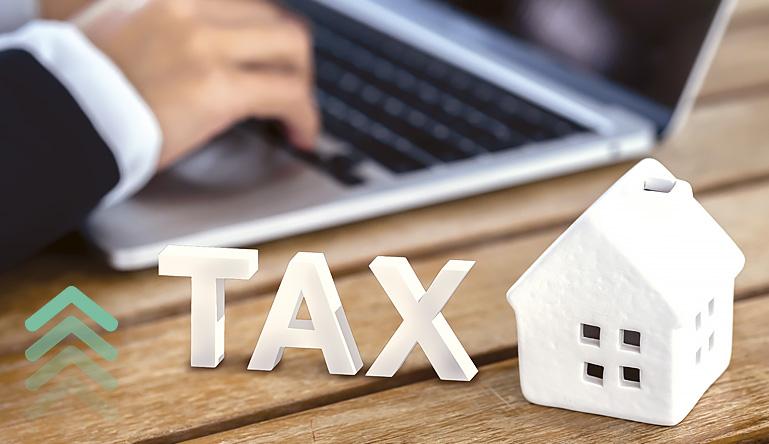-
 Regional Sales Manager, Catalis Tax & CAMA
Regional Sales Manager, Catalis Tax & CAMAExperienced sales leader helping governments drive efficiency and transparency with modern Tax & CAMA solutions.
View all posts
Closing the Compliance Gap for Fair and Transparent Taxation
For many state and provincial property tax divisions, the mission of ensuring fair and equitable taxation has never been more complex. Administrators must evaluate the performance of multiple jurisdictions, manage vast amounts of data, and uphold compliance across counties, all while operating within shrinking budgets and legacy systems that can no longer keep pace.
The process of property tax oversight has evolved from simple verification into a sophisticated data-driven operation requiring advanced technology, transparency, and collaboration between state and local governments. To maintain public trust, state-level property tax administration systems must modernize the way they monitor compliance and deliver timely, accurate reporting.
The Challenge of Outdated Oversight
Traditional oversight methods, spreadsheets, paper forms, and manually compiled reports often lead to delays, errors, and incomplete visibility into county-level assessment practices. Without real-time access to digital data, oversight teams face significant barriers when tracking compliance or investigating discrepancies between local assessments.
Fragmented data sources make it difficult to aggregate valuation records statewide. Limited transparency between counties and oversight agencies leads to inconsistencies in how assessments are conducted. And when compliance reviews remain reactive rather than proactive, disparities in valuation may persist long before they’re detected or corrected.
This outdated approach not only slows reporting to legislators but also makes it harder to maintain taxpayer confidence in equitable valuations.
Why Modernization Matters
Modern property tax oversight software offers a better path forward. A cloud-based property tax system allows oversight administrators to consolidate information from multiple jurisdictions, automate routine processes, and focus on ensuring fairness and accuracy across every assessment district.
Instead of sifting through disconnected files, administrators can rely on tax equalization software for states that streamlines oversight, validates data submissions automatically, and flags anomalies for review. This reduces both administrative effort and potential inconsistencies in property valuations.
With digital transformation now shaping every aspect of government operations, embracing a government tax oversight platform is more than a modernization step; it’s an equity initiative that directly supports public trust and accountability.
Key Benefits of a Digital Oversight Framework
Shifting to an integrated property tax compliance platform can transform how state oversight teams manage workflows, communicate with assessors, and deliver reports. The right technology provides:
- Automated workflows that simplify compliance reviews, abstract submissions, and equalization reporting.
- Electronic property tax submissions for local governments to replace manual file exchanges and paper forms.
- Tax assessor performance monitoring tools that benchmark appraisal accuracy and highlight deviations in real time.
- Remote assessor review and travel reduction tools, allowing state personnel to conduct oversight efficiently from any location.
- A centralized property tax records management system that ensures data integrity, version control, and audit readiness.
By eliminating outdated paper processes and creating seamless digital connections between local governments and state oversight teams, administrators can monitor performance continuously rather than through periodic audits alone.
Building Equity Through Data Transparency
Equity in taxation depends on consistency and visibility. Oversight offices are increasingly leveraging equitable taxation data platforms and property tax analytics and transparency tools to identify trends, detect outliers, and support fair valuations.
Data-driven insight empowers administrators to:
- Track assessment ratios and identify valuation gaps across counties.
- Evaluate whether equalization factors are being applied consistently statewide.
- Provide legislators and stakeholders with clearer, more transparent reporting backed by reliable analytics.
As oversight becomes increasingly data-centric, the ability to draw insights from a property tax division data warehouse and perform on-demand compliance checks becomes vital. This transparency not only strengthens confidence in the process but also reduces appeals and disputes that burden both taxpayers and governments.
A Future of Fair, Efficient Oversight
State agencies seeking to modernize their oversight processes are turning to digital property tax oversight transformation initiatives that combine automation, integration, and analytics. By adopting an integrated property tax compliance platform, oversight bodies can unify statewide records, automate reporting schedules, and apply consistent review standards across jurisdictions.
A statewide property tax filing system built on secure, cloud-based infrastructure allows oversight teams to monitor compliance from anywhere, reducing travel costs and improving collaboration between state and local officials. Through digital workflows and remote accessibility, fairness is enforced proactively rather than retroactively.
Delivering a Higher Standard of Oversight
Catalis Property Tax Oversight (PTO) delivers a comprehensive SaaS compliance and management solution purpose-built for state governments. Designed to automate property tax oversight workflows and ensure fair and equitable taxation, Catalis PTO empowers oversight administrators to monitor performance, collect digital filings, and evaluate valuations with confidence.
The cloud-based platform combines configurable workflows that comply with each state’s statutes and reporting requirements with a centralized property tax records management system for secure data storage and analytics. It streamlines electronic filing for abstracts and centrally assessed renditions, while its built-in property tax audit tracking and reporting software ensures transparent documentation.
By integrating automation, analytics, and accessibility, Catalis PTO helps state administrators close the compliance gap, delivering the visibility, efficiency, and equity that define the future of government tax oversight.
Visit Catalis for a comprehensive look at our solutions for government and the public sector.


